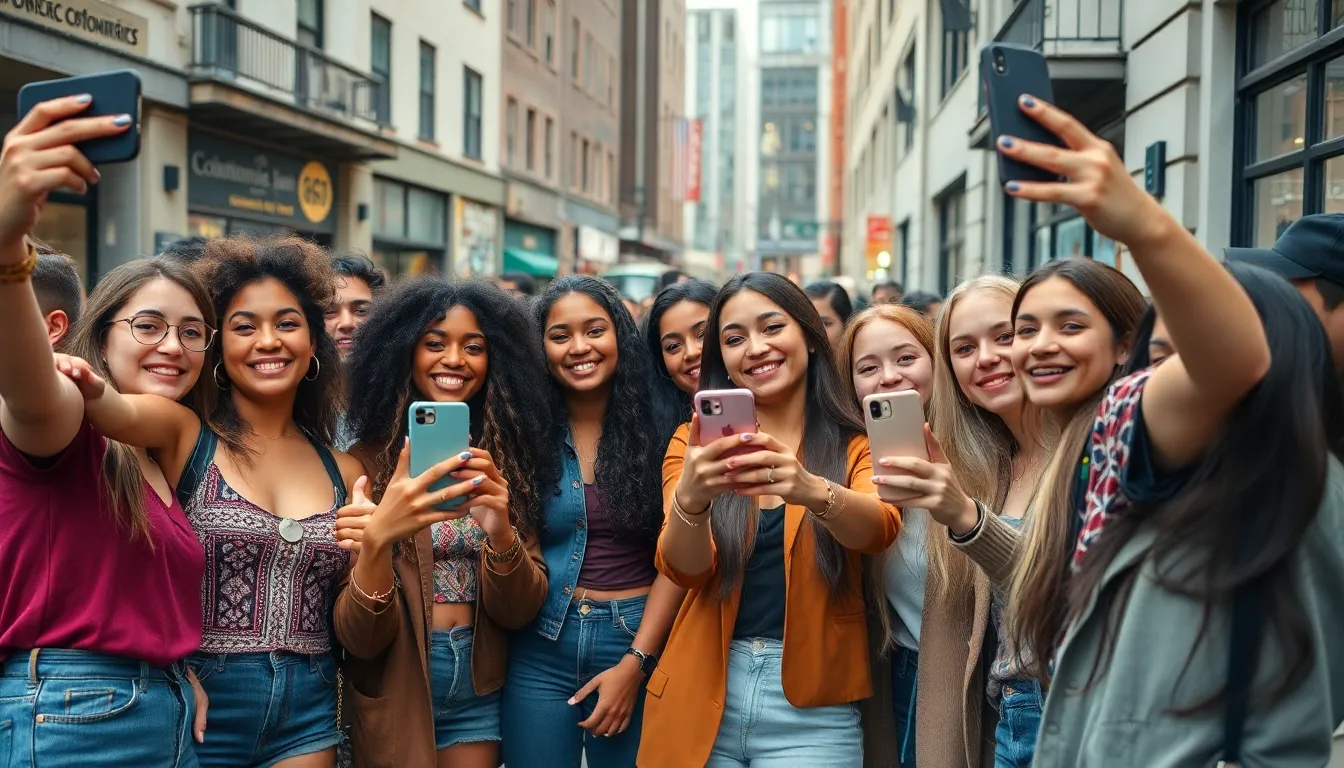In a world where social media reigns supreme, the fear of missing out—better known as FOMO—has become a cultural phenomenon. Picture this: your friends are posting about an epic concert, a spontaneous road trip, or the latest brunch spot, and you’re left scrolling through your feed like a sad puppy. That’s FOMO in action, and it’s more contagious than a cat video on the internet.
But what does FOMO really mean? This slang term captures the anxiety of feeling left out, and it’s a sentiment that resonates with many. Whether it’s missing out on a party or a trending event, FOMO can turn even the most introverted person into a social butterfly—at least on Instagram. Dive into the world of FOMO and discover how this little acronym has taken over our lives, one post at a time.
Table of Contents
ToggleUnderstanding FOMO in Slang
FOMO, or fear of missing out, represents a prevalent emotional response common in today’s culture. It occurs when individuals feel apprehensive about missing social interactions or events.
Definition of FOMO
FOMO refers to the anxiety experienced when someone perceives that others are having enjoyable experiences without them. This feeling often arises from seeing posts on social media platforms like Instagram or Facebook. Statistics reveal that approximately 56% of social media users report experiencing FOMO frequently. Such experiences can lead to decreased self-esteem and increased feelings of isolation.
Origin of FOMO
FOMO first emerged in marketing literature during the early 2000s. Its roots trace back to the rise of social media, where individuals began sharing curated life moments. The term gained traction in 2013 after being popularized by an article in the Harvard Business Review. Over time, FOMO transcended its initial marketing context, becoming widely recognized in everyday language. Today, it signifies a broader societal concern about social connection and the desire to stay in the loop.
The Impact of FOMO on Culture

FOMO significantly influences modern culture, primarily through social media dynamics.
FOMO in Social Media
Social media platforms amplify FOMO by showcasing curated highlights of others’ lives. Users often scroll through feeds filled with images from events like concerts, vacations, and parties. This visibility can stir feelings of inadequacy for those who aren’t participating. Statistics reveal that about 56% of social media users frequently experience FOMO, often leading to anxiety and desperation to engage in similar activities. Moreover, the pressure to stay connected or respond to emerging trends can impact mental well-being. As a result, people tend to prioritize social media interactions over real-life connections.
FOMO in Everyday Life
FOMO extends beyond digital interactions, deeply embedding itself in daily activities. Individuals encounter FOMO in group settings, like friends discussing plans that exclude others. These situations often lead to feelings of isolation and insecurity, prompting some to overcommit to avoid missing out. Research indicates that this phenomenon can decrease self-esteem and create unnecessary stress. Additionally, FOMO manifests in choices like attending events or purchasing items to keep pace with peers. Ultimately, the desire to belong drives behaviors that reflect underlying feelings of anxiety about social acceptance.
How FOMO Affects Mental Health
FOMO can significantly impact mental health, often leading to increased anxiety and stress. Many individuals experience a constant pressure to engage socially, which exacerbates feelings of inadequacy. Symptoms often manifest as excessive worrying about missing out on events and experiences, influencing daily routines and interactions. Studies reveal approximately 56% of social media users frequently grapple with these feelings, making it a widespread issue.
Anxiety and Stress
Anxiety often arises as individuals perceive their friends enjoying activities without them. This sense of exclusion fosters stress, leading to negative self-assessment and doubt about one’s social worth. Negative emotions can easily spiral into deeper mental health issues, such as depression or heightened social anxiety. Many find themselves compulsively checking social media for updates, which can create a vicious cycle where the anxiety only intensifies. It’s crucial to understand these dynamics as they shape personal well-being in our connected world.
Coping Mechanisms
Developing effective coping mechanisms proves essential for managing FOMO-related anxiety. Some individuals turn to mindfulness and meditation practices to stay present, reducing the urge to compare themselves to others. Others find solace in setting healthy boundaries with social media use, limiting exposure to triggering content. Engaging in hobbies or activities that promote personal joy can divert attention from FOMO. Seeking social support from friends or family stands as another key strategy, as open conversations about feelings can alleviate the burden. Emphasizing self-acceptance also plays a vital role in combating the negative effects of FOMO.
FOMO has become an undeniable part of modern life. As social media continues to shape how individuals connect and share experiences, the fear of missing out remains a significant concern. It’s clear that this phenomenon can lead to heightened anxiety and stress, impacting mental health and well-being.
By understanding FOMO and its implications, individuals can take proactive steps to manage their feelings and cultivate a healthier relationship with social media. Embracing self-acceptance and prioritizing genuine connections can help mitigate the effects of FOMO. Ultimately, recognizing the impact of FOMO empowers individuals to make more mindful choices in their social lives, fostering a sense of fulfillment and belonging.



